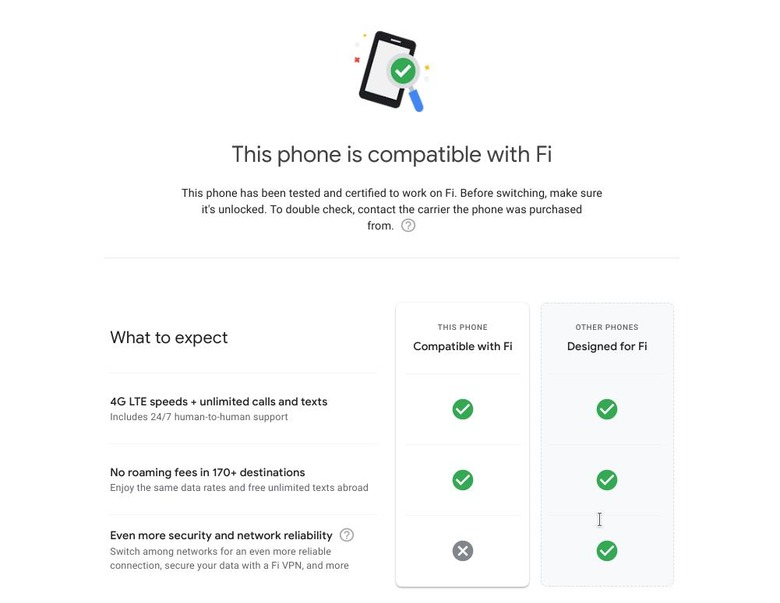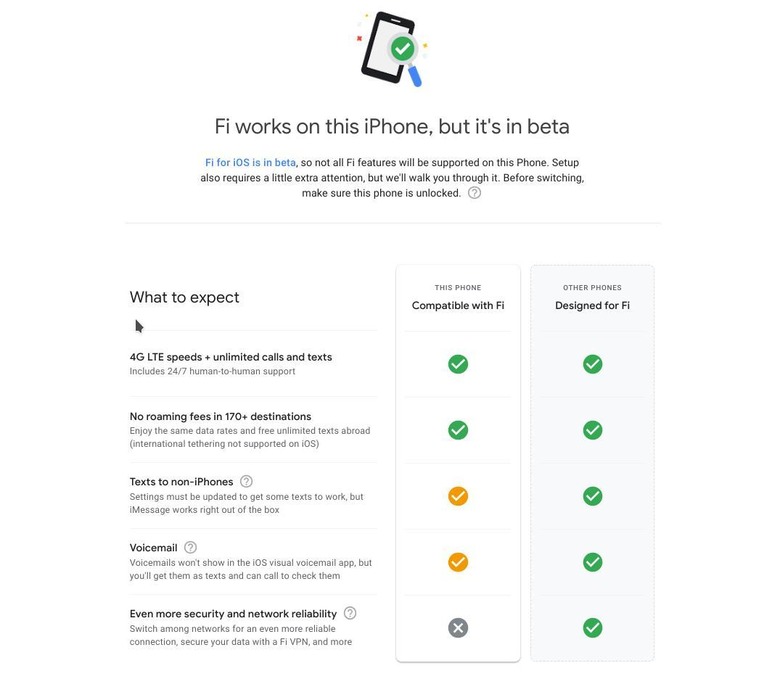Google Fi Compatibility Check: What You'll Be Missing Out On
After a prematurely published embargo, Google has formally acknowledged that it was expanding its Project Fi, now officially called Google Fi, MVNO service to more smartphones. Shockingly, that even includes more recent iPhones. But while it has indeed embraced more Android phones and iPhones, it isn't doing it without prejudice. Fortunately, Google has provided a simple online tool to show you what features you won't get unless you opt for a phone that's fully supported on Fi.
The actual roster of smartphones "designed for Fi" hasn't actually changed. So if you want to get everything that Google's service has to offer, you'll have to choose between a Google Pixel 2 or 3 and their XL counterparts, a Moto G6 or Moto X4 Android One Edition, an LG G7 ThinQ or a V35 ThinQ, Oddly, the first gen Pixel isn't included in that list but it's still supported. You'll only be missing out on the SIM-free activation feature.
For other Android phones, you're pretty much getting just the basics. That means unlimited calls and texts, no roaming fees in certain countries, and, of course, 4G LTE data. What's not included is Google Fi's key feature of being able to switch between T-Mobile, Sprint, US Cellular, and free public Wi-Fi depending on which one is stronger. These phones also don't have access to Fi's new VPN feature.

iPhones naturally have it worse but not by much. Only models from the iPhone 5s and newer are supported and there are certain caveats when using iMessage and vociemail. Other than that, though, they're on equal footing with other Android phones, though the service is still in beta.

While it may seem that other phones are only missing out on the "Even more security and network reliability" feature, that is actually Google Fi's special sauce. This could pretty much make the service a big no for consumers who were looking forward to switching without having to buy a new, "deigned for Fi" phone.
